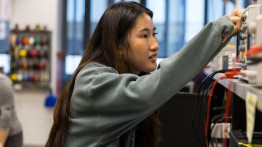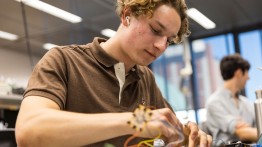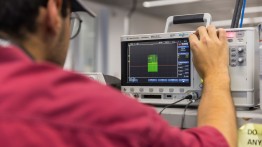Electrical Engineering Laboratories
Laboratories:
- Special Projects Laboratory - Room 601
- Microlab (uLab), Server Room, ICE (Integrated Circuit Engineering) Laboratories - Room 602, 602A, and 603
- Senior and Undergraduate Laboratories - Room 604 and 605
- Printed Circuits Board (PCB) Laboratory - Room 607
- Special Projects Laboratory - Room 608
Staff
Aladino Melendez
Electrical Engineering Lab Technician
dinom@cooper.edu
Phone: 212-353-4346
Michael Giglia
Electrical and Mechanical Engineering Lab Technician
michael.giglia@cooper.edu
Phone: 212-353-4327







